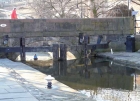Change and continuity
This particular concept is more appropriate for fourth stage Key Stage 1 than Key Stage 2. It is about developing an understanding of the idea that some things change while others old and new stay the same. A house for example will both have doors and windows (continuity) but what those doors are made of and how they work will be different (change) this is about comparing and contrasting in particular to your students own experiences and lives. This should become a process that children can apply in a less explicit manner across Key Stage 2. Read more
-

Churches as a local historical source
ArticleClick to view -

OFSTED, primary history and creativity
ArticleClick to view -

Case Study: Hit the net!
ArticleClick to view -

Primary History and planning for teaching the Olympics - four curricular models
ArticleClick to view -

Local History and the 2012 Olympics
ArticleClick to view -

Learning to engage with documents through role play
ArticleClick to view -

History in the Urban Environment
ArticleClick to view -

Hearts, Hamsters and Historic Education
ArticleClick to view -

Learning what a place does and what we do for it
ArticleClick to view

